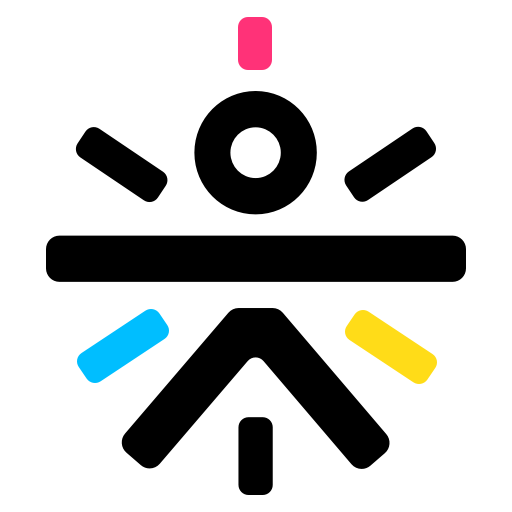Most people would agree that cult.fit has been able to give working out a whole new meaning. Cult members no longer dread hitting the gym! We’ve been able to make working out a lot more fun and engaging so that our members stay constantly motivated and keep coming back.
But what happens when this whole new way of working out becomes the norm? When new and exciting becomes mundane?
At cure.fit have been excited about this challenge. The question we asked ourselves was
How do we make the workout experience even more engaging, more exciting?
So, the tech experts at Cure.fit started toying with and evaluating the latest technologies used in the global fitness industry. What caught our fancy was the potential use of a heart rate monitor in a group class.
Now, this wasn’t a completely new solution because there are other ‘gyms’ that are doing this today. However, what was peculiar, was the model in which this was happening and the kind of workouts we were using these in.
Our problem statement was clear
Build an engaging experience using members’ real-time workout data in a group class.
But how do we objectively conclude that this project succeeded? A good way to track its success would be to monitor
- Class ratings: To validate a step jump in the in-class experience
- NPS survey responses: We hoped that the majority of the responders would be promoters
- Potential to scale easily across our 200+ centers
The set up
We decided to call this experience PULSE! Simply explained, this was a regular Cult class, with the same movements — the only thing changing was the additional usage of a heart rate monitor. This design allows us to scale the experience across multiple centers easily.
Each participant of this format is loaned a chest-strap heart rate monitor. The monitor measures the Heart Rate and computes Calories Burnt throughout the workout duration.
The heart rate is divided into effort zones — normal, low, medium, High intensity and Max. For each class we set a target time period that the member needs to spend working out in a particular effort zone.
- Chest Strapped Heart Rate Monitor: Of the various options between arm bands and wrist bands, we chose to go with the chest strapped heart rate monitor mainly because it gave more accurate readings & results
- Effort Zones: The Heart Rate (HR) range is divided into 5 zones according to the individual’s maximum heart rate (HRmax): Normal (< 60% HRmax), Low (60–70% HRmax), Medium (70–80% HR max), High Intensity (80–90% HRmax), Max (90–100% HRmax)
- Target: Each workout has a time-based target depending on the intensity and format of the workout. Eg: The target for a member is to spend 12 minutes in High Intensity or Max zone as shown below.

User journey
We mapped the ideal user journey and broke it down into two flows — one they would experience on our app and the other while they were at the center. At each step of this flow, we noted down the ‘problems to solve’ (blue text) as shown in the image below:

Challenges
We identified 3 key challenges
- We had to show all the relevant information, readings of 20 users on a single 55" screen which would be placed in the workout studio. All this, without compromising on the visibility and readability of the information.
Here’s all the information we needed to communicate on the screen:
Class level information: How to wear the Heart Rate Devices correctly, Heart Rate zones, Target, Class performance
Member level information: Member’s Name, Is the member connected or disconnected, Heart Rate, Heart Rate Zone, Time spent in Target Zone, Target completed, Calories Burnt, How did user fare in comparison to the class, User’s individual performance
2. We had to clearly explain the process of collection, usage, and return of the Heart rate chest monitor devices at the center - to ensure that the overall class experience is free of operational hiccups.
3. How do we ensure that a customer can clearly differentiate between PULSE classes and other classes — because the workout remains the same and PULSE is simply an experience built on top of it.
Prototyping and User Testing
Defining a seamless in-class experience was the most crucial part of ensuring this format is a success. So we prototyped multiple designs, options and tested their usability over and over again until we were satisfied with the final outcome. And, of course, our first set of testers were our very own employees.
After multiple feedback and iterations, we finally settled on a design that we were comfortable testing with actual customers. So we installed the whole set up at one of our Bangalore centers. This setup included the Television screen (for casting), android tab (on which the in-center experience was cast) and the Chest strap heart rate monitors.
We got close to a 100 customers to test this new format. We collected feedback by shadowing customers during the workout, through focussed group discussions and email surveys post-workout. The designs went through multiple changes in the course of this Usability testing:
- We redefined the effort zones and the target time spent
- We formatted the text in various places for better messaging and readability
- We redesigned the leaderboard to address the members’ natural intent to compare their metrics with others
- We tinkered with the in-centre onboarding experience to ensure members have the whole context so they can truly enjoy the workout experience
Pilot and performance
Once we had finalized the design and process we decided to pilot this experience across a few centers. We piloted this with 10 classes/day across 3 centers for 2 months. We conducted approximately 500 classes during this pilot period.
So how did it really work?
Onboarding experience
When we launched the PULSE pilot classes, we needed to inform our customers that we’ve launched a new and exciting experience. We did this in the following manner:

Class booking experience
When a member books a PULSE class we assign each member a unique Heart Rate device that they can collect at the center:

In-centre Experience
We have a completely orchestrated PULSE experience at the center. At the beginning of the workout, the in-center screen explains the workout experience, the target for today’s class and whether the member’s device is connected. Throughout the workout, members can monitor their effort and progress in terms of
- Current Heart Rate
- Time spent in a particular intensity Zone
- Calories Burnt
The screen is designed to encourage members to compete with their class, push themselves more and complete the target.
At the end of the workout, we celebrate the accomplishment of all members and also let them know how they fared against the other members of the class.

Post Workout Experience
After any PULSE workout, each member gets a detailed report that explains their individual performances, their class rank and a minute by minute summary of their effort.

The Final Outcome
How did we stack up against some of our success metrics?
- The class ratings improved by 2–3 basis points in the centers where we launched PULSE as compared with NON-PULSE classes of the same format
- Average attendance in classes improved by 10 percentage points.
Learnings
PULSE is a better class workout experience as measured by improvement in ratings and attendance. These classes are more engaging as demonstrated by the customer feedback we received. Our members enjoy the competitive environment it creates and also appreciate the measurable results that they get via PULSE reports.
Way ahead
As a team, we are now looking for affordable ways to extend this experience to all our members. We are also working towards making the experience richer and figuring out how to scale this experience to all workout formats.
We are excited to bring the PULSE experience to a center near you :)
Originally published at https://medium.com on November 13, 2019.













